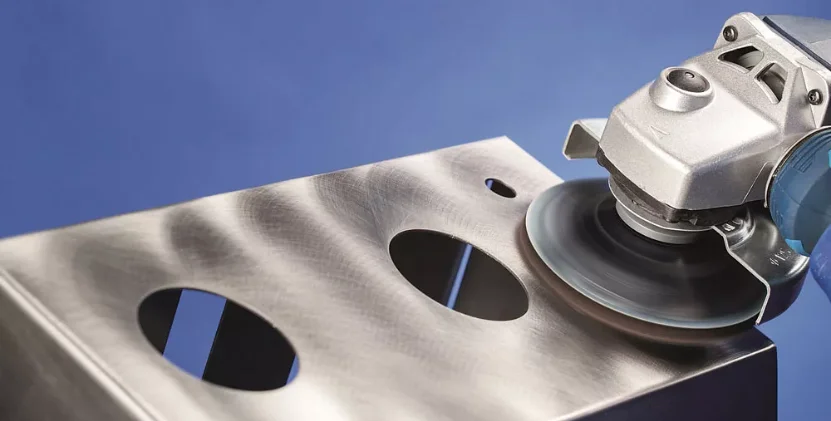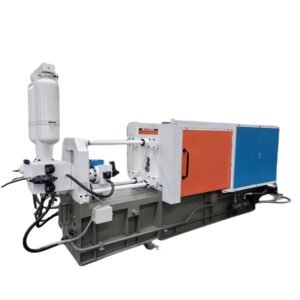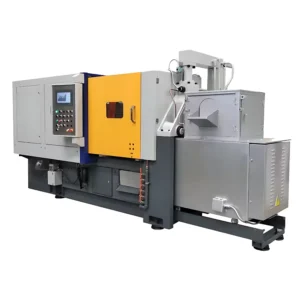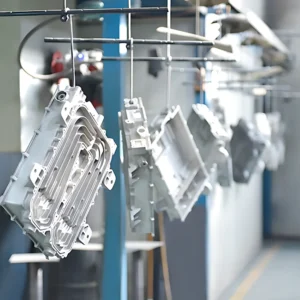Surface finishes are a technique for processing the surface of a material, which can increase the rust resistance, wear resistance, smoothness, etc. This article will introduce surface finishes and their 10 surface finish processes.
What is Surface Finishing?
Surface finishes is the process of changing the surface characteristics of a material (usually metal) such as texture, color, and chemical composition. This process can improve the functionality and appearance of the material, making it more suitable for a variety of applications. Industries such as aerospace, automotive, and medical rely heavily on surface treatment to manufacture their critical components.
Why Is There A Need For Surface Finish?
Surface finishes protect materials. Here are some of their specific functions:
Corrosion resistance
Surface finishes protect materials from moisture and oxygen in the air, slowing the rate of corrosion.
Durability
Extends the life of parts by protecting components from rust, heat, weathering, and mechanical stress. This reduces the need for frequent replacement, saving costs.
Aesthetics
Surface finishes remove imperfections and create smoother, more uniform surfaces. This improves the appearance of a product. In addition, they can provide unique visual effects, such as brushed or textured finishes.
Chemical resistance
Certain surface finishes make surfaces resistant to chemical attack, which ensures that the material maintains its integrity and performance when exposed to harsh substances.
Adhesion
Surface finishes can enhance the adhesion of paints and other coatings, as residual oils from metalworking can weaken adhesion. This allows coating applications to last longer and be more effective.
Functionality
Surface finishes can create smooth surfaces to improve the functionality of a product. For example, in the healthcare industry, surgical instruments require burr-free blades, and medical implants need to be polished to a smooth surface to ensure safety and fit during use.
Read more: Metal surface finishes:understanding the basics of applying finishes

10 Types Of Surface Finishing
Electropolishing
Electropolishing is an electrochemical process that removes a thin layer of material from a metal surface to achieve a smooth, shiny finish. It is commonly used on stainless steel and other metals to improve corrosion resistance and aesthetics. The process is effective in removing microscopic burrs and surface imperfections.
Grinding and Lapping
Grinding and lapping are mechanical processes that involve the abrasive removal of material from a metal surface to achieve a high degree of flatness and smoothness. This process is suitable for products that require tight tolerances and high surface quality, such as in the production of precision components and optical lenses.
Painting
Painting involves applying protective and decorative coatings to metal surfaces. Various methods include spray painting, electrostatic painting, and powder coating. This treatment method can enhance appearance and resist environmental factors such as moisture and UV radiation and is commonly used in the automotive and construction industries.
Sanding or Sand Blasting
Grinding or sandblasting uses abrasive particles to clean or texture metal surfaces. This method is effective in removing rust, paint or other surface contaminants and is often used as a preparatory step before painting or other surface finishes such as electroplating.
Electroplating
Electroplating uses an electric current to deposit a thin layer of metal on the surface of a material. Common metals include chromium, nickel, and gold. Electroplating is widely used to improve corrosion resistance, reduce friction, and enhance appearance, with applications ranging from jewelry to automotive parts.
Vacuum Plating
Vacuum plating is the deposition of a metal layer onto a material surface in a vacuum environment. Techniques such as physical vapor deposition (PVD) and sputtering are common methods. The process produces thin, high-purity coatings that are used in a variety of industries such as electronics, automotive, and decorative applications. Excellent adhesion and enhanced corrosion and wear resistance.
Thermal Spraying
Thermal spraying applies molten or heated material to a material surface to form a coating. This method improves the wear resistance, corrosion resistance, and thermal protection of the material. Common thermal spraying techniques include flame spraying, arc spraying, plasma spraying, and high-velocity oxygen fuel (HVOF) spraying. These coatings are widely used in aerospace, automotive, and industrial machinery.

Chemical Treatment
Chemical treatment changes the metal surface through chemical reactions. This includes methods such as phosphating, chromating, and anodizing. These finishes can enhance corrosion resistance, improve paint adhesion, and add decorative finishes. For example, anodizing is commonly used on aluminum parts to create a durable and corrosion-resistant oxide layer and a shiny surface.
Powder Coating
Powder coating is a process where a fine powder (usually composed of resin and pigment) is applied to the surface of a material. After the powder is electrostatically deposited, the coated part is heated to melt the powder and form a smooth, durable finish. This method is highly resistant to corrosion, chemicals, and weathering, making it ideal for automotive, appliance, and outdoor furniture applications.
Hot Dipping
Hot-dip galvanizing, also known as hot-dip galvanizing, involves dipping metal parts into a bath of molten zinc. The process creates a strong, corrosion-resistant coating that protects the underlying metal. Hot-dip galvanizing is widely used on steel parts exposed to harsh environments, such as in construction, marine, and industrial applications. It provides long-lasting protection against rust and corrosion.
How to Choose Surface Finishes?
Determine the Material Type
Aluminum finishes include anodizing, powder coating, and chemical conversion coating. Anodizing provides excellent corrosion resistance and is available in vibrant colors.
Common steel finishes include galvanizing, electroplating, and powder coating. Galvanizing is ideal for corrosion protection, especially in outdoor environments.
Stainless steel is best treated with passivation, electropolishing, and chemical finishes to enhance corrosion resistance.
Cost and Production Speed
Electroplating is generally low-cost, quick to complete, and suitable for high-volume production. However, additional time may be required for surface preparation and post-processing steps.
Anodizing is slightly more expensive, but offers excellent durability; suitable for applications where performance outweighs cost. The process can be time-consuming, depending on the thickness and complexity of the anodized layer.
Powder coating offers a good balance between cost and performance, with relatively fast production times, making it ideal for large-scale production. Curing time in the oven is a factor to consider.
Vacuum plating is more expensive and slower, but offers high precision and quality, making it suitable for special applications. A vacuum environment is required, which increases production time.
Thermal spraying has a high initial cost and slow processing speed but is well suited to high-performance requirements in demanding environments.
Consider the Operating Environment
For example, materials exposed to high temperatures require treatments such as thermal spraying or ceramic coatings to withstand the heat and prevent degradation. Applications include aerospace and industrial machinery.
In cold environments, treatments such as electroplating provide additional protection against brittleness and cracking. Commonly used in outdoor equipment.
Materials used in chemical plants require treatments such as chemical-resistant coatings or passivation to protect against corrosive substances. This is common in pipes and tanks.
Surfaces that are frequently cleaned with harsh chemicals can maintain integrity and sanitary standards through treatments such as anodizing or electropolishing.
In high humidity or marine environments, treatments such as hot-dip galvanizing or powder coating provide excellent protection against rust and corrosion. It is the preferred choice for shipbuilding and coastal construction.
For indoor environments with moderate humidity, anodizing or electroplating is sufficient to maintain the appearance and function of the material.
Treatments such as nitriding or carburizing increase surface hardness and are suitable for parts that are subject to wear, such as gears and cutting tools.
For parts that need to withstand impact or pressure, treatments such as shot peening increase toughness and fatigue resistance and are commonly used in automotive and aerospace parts.

Summary
We hope this article was helpful. Nowadays, surface finishes technology has been applied in various industries, and the surface finishes of products can enhance their performance and life.
If you need surface finishes, please contact us, we are experts in this field and are fully capable of helping you meet your surface treatment requirements.
In addition, we also provide a variety of other services, so if you are looking for custom CNC machining services for your project, we can help you.




